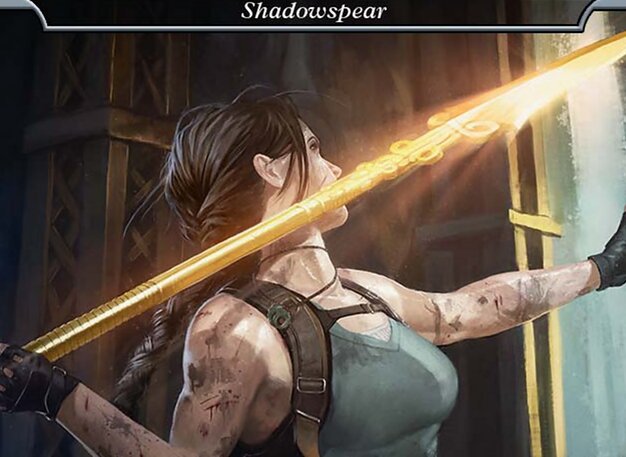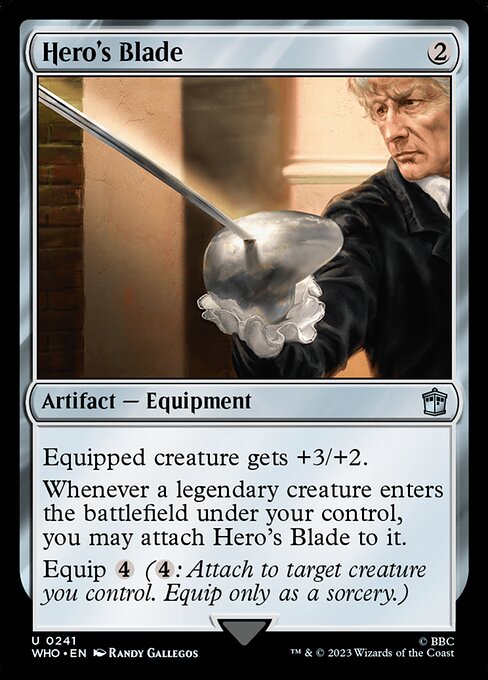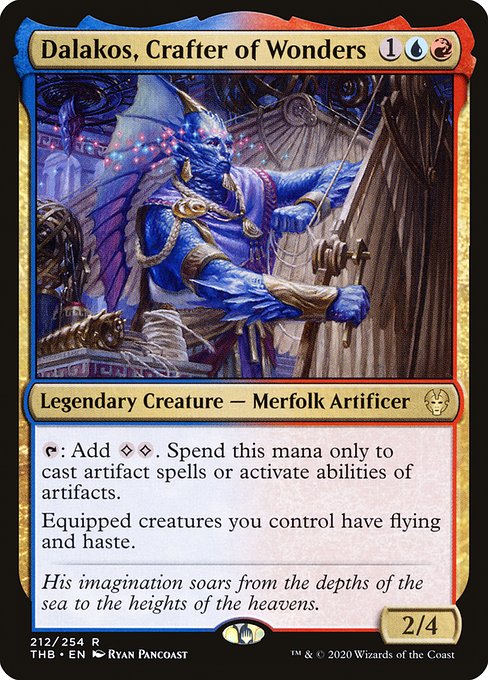Magic: but Cheaper – Dalakolossus
The Giant Fighting Robots have returned…
Do you like Gundam? How do you feel about the MegaZord? Does the movie Pacific Rim tickle your fancy? Well, I’ll tell ya what – I thought about this analogy for like twenty minutes and couldn’t do any better than that, so sorry to everyone who usually enjoys my well-thought out intros. This is one of the bad ones. Let’s talk about giant fighting robots… in Magic??? This is Budget Dalakolossus.



Creatures (14)
Artifacts (21)
Lands (19)
60 Cards
$82.42
Sideboard
15 Cards
$9.39
The Deck
“So what the heck is Dalakolossus? That’s definitely a word you just made up.” Yeah, it is.
Dalakolossus is a deck that looks to take advantage of everyone’s favorite mech titan, Metalwork Colossus, in combination with some really sweet aggressive artifact backup plans. Since its time in Standard, Metalwork Colossus has been a fan favorite and players have tried to brew around it to very little relative success. Whether or not this attempt follows that trend is yet to be seen, but I can say that most of the cards in this deck are pretty good, which leads me to believe that the deck is also at least pretty good. The main game plan is to put enough non-creature artifacts into play to make the Colossus essentially – if not actually – free to cast. Often, a 10/10 beater will be enough to close out a game on its own, but for the cases when it isn’t, the deck packs a solid artifact aggro backup plan, driven by some surprisingly powerful equipment. The deck looks to take the traditional approach to Metalwork Colossus and turn it just a bit on its head.
Colossification
The initial plan of this deck is to play Metalwork Colossus. To reach this end, the deck packs heavily on non-creature artifacts. The Equipment we will touch on momentarily, but they are bolstered by the likes of Moonsnare Prototype and Springleaf Drum, which effectively create two mana for the robot. Wedding Invitation is another recently-printed key piece to the Colossus strategy, as its ability to replace itself while making a colossus unblockable has proven invaluable.
In addition to the cheap artifacts in the deck, this plan is bolstered by the likes of Emry, Lurker of the Loch and Sai, Master Thopterist. Emry offers a second chance if an opponent happens to be packing interaction, though, she’ll typically be targeting Wedding Invitations and Colossi themselves, as those are the most likely candidates to be sitting in the graveyard. Sai, on the other hand, offers an alternative out, as his Thopter token production can swiftly overwhelm an opponent who’s busy focused on defending from the giant 10/10. Shrapnel Blast, alongside the auxiliary attacking power of Sai, can help to close out a game in short order, giving the deck some intense options when it comes to finishing an opponent off. The last collossification effect to note is Sanctum of Ugin. While I don’t usually cover lands in these breakdowns, this land is essential in its ability to chain Colossi together, as the first can find a second or third, putting any opponent’s removal suite to the test.
Equipification
The secondary namesake of the deck is Dalakos, Crafter of Wonders, who benefits hugely from a deck full up on equipment spells. He can work individually, powering out some of these strong artifacts and picking up equipment himself, though, he’s much better in tandem with the Colossus giving it haste and flying to turn it into a threat that demands an immediate answer. One of the best cards for the archetype recently is certainly Brass Knuckles, which, when cast on its own, puts eight mana value into play for the Colossus. In tandem with Dalakos, the three cards can come together to form the ultimate threat, a hasty, flying 10/10 with double strike that will end the game in one turn.
Of course, Brass Knuckles can’t be the only tool on the belt for old Dalakos. Hero’s Blade is an extremely cheap sword that any of the legendary creatures in the deck can pick up for free when they enter play. Boasting a +3 power bonus, the sword will turn even a lowly Emry into a legitimate threat – not to mention what happens when they’re around in multiples.
Inventor’s Goggles, likewise, can equip themselves for free to either Dalakos or Sai, and are quite free to drop on turn one. While their stat buff isn’t anything to write home about, they help the deck to compound its advantage and create a solid backup plan of attack.
Lastly is Shadowspear, which should come as no surprise to anyone who’s played a single game of Modern in the last year. The spear can turn the tide of a game with one swing via its lifelink ability, and the capacity to stomp over the top of an army of cat tokens or other cheap creatures is huge.
How does it play?
Like many budgeted aggro decks in the format, Dalakolossus can be a little slow out of the gate. On the whole, I think that the deck is better suited than other versions of the deck that don’t feature Moonsnare and Springleaf Drum, and the equipment backup plan is quite potent when slogging through the mid and late game. Colossus is certainly a turn-four strategy, but it attacks from an angle that many decks may not be prepared for and once it gets going it doesn’t let up the pressure at all.
One of the major advantages that this deck boasts over other similarly-constructed artifact decks or budget decks is its cohesion throughout the curve. Both aspects of the game plan work very well individually and as a unit, which means that the consistency of this deck increases exponentially because all of the cards are capable of working with each other to some degree.
Overall, I think that this deck is a solid base for anyone looking to move outside of the norm and play cards that opponents will need to pick up and read. It’s a solid strategy that is capable of teaching inherent synergies within a deck’s construction and how best to capitalize on them, which is an invaluable skill for anyone looking to level up their game.
End Step
That’s all for this one! Big thanks to Odince, a local high-level brewer and community member who I shamelessly stole this deck idea from. Honestly, the deck is pretty sick even if it doesn’t have great matchups going into some of the top decks in the format, and I think that decks that have something to teach a player are just as if not more important than decks whose only job it is to win games. Hopefully you’re able to find something fun out of this and maybe even learn some new skills along the way. Until next time, stay safe, play smart, and thanks for reading.








